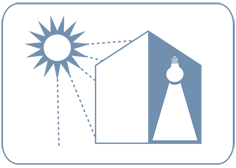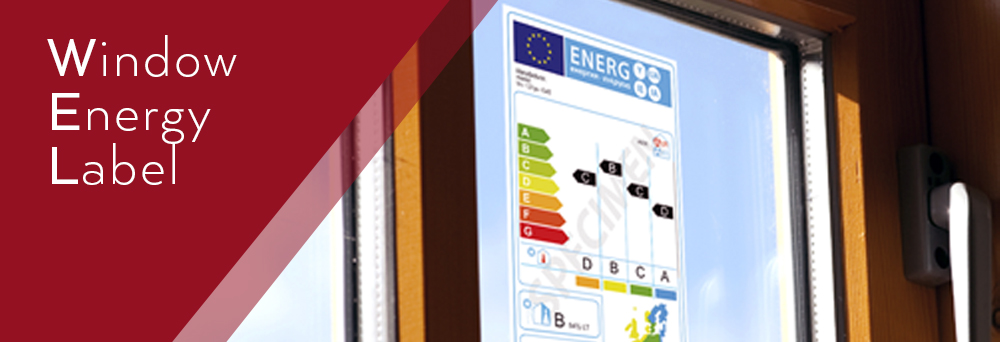The benefits of Window Energy Labelling
Providing meaningful and intelligible information to consumers on the energy performance of the products they purchase is effective at reducing energy demand, bringing savings to households and helping cut GHG emissions. Energy labels have demonstrated to be an efficient information tool for consumers and can be applied to windows to deliver significant savings in the building sector[i].
► Glass for Europe supports the development of meaningful window energy labels, in order to inform consumers in their product choice and, indirectly, to pull window markets towards most energy-efficient products.
► So long that European authorities do not resume their work to develop a meaningful EU window energy label, Glass for Europe supports the development of national window energy labels, that can be easily established based on all evidence and models already available.
Why labelling windows?
It is not easy for consumers to identify the energy performance of windows on offer, while energy labels can provide relevant information in clear and intelligible ways. Windows performance is best assessed by a combination of several product’s characteristics[ii], which need to be correlated with the climatic conditions of the building’s location. However today, consumers are most often provided with limited information, rarely going beyond the estimated costs of the works and, at best, a single thermal transmittance value.
Window energy labels can fill this information gap with an intelligible performance ranking. Rankings are based on sophisticated background calculation models computing all relevant parameters, to provide an information that is accurate, relevant and comparable. Consumers are thus better equipped to compare offers and to opt for energy-efficient solutions. Across Europe, several window energy rating systems have been developed and have proven effective in guiding consumers towards more efficient windows[iii].
What needs to be considered when developing a window energy label?
To Glass for Europe, window energy labels need to be developed specifically for the residential sector. Any window label needs to provide an accurate ranking of window performance in minimizing energy needs on an annual basis, i.e. heating and cooling needs combined. To this end, it needs to be based on the energy balance methodology (read more) and to assess the performance of the window (i.e. frame plus glazing), independently of any add-on device such as curtains, roller-shutters or other shading devices.
Many background calculations and simulation methods have been developed at EU level, within an eco-design preparatory study[iv] to support the development of an EU window energy label. Enough evidence and models exist to support the development of meaningful window energy labels. In fact, several labels already exist that fulfil these methodological requirements[v].
Should national or an EU wide label be preferable?
Glass for Europe has always been a strong supporter of an EU label. The flat glass industry’s belief is that it is possible to adequately rank products and inform citizens all across the EU, based on four climatic zones. The European Commission recognised the massive energy saving potential of windows[vi] and commissioned an eco-design preparatory study that established several options. Further work on this item has been however put on-hold since September 2015 as other priorities in the labelling policy field emerged.
Glass for Europe regrets that substantial energy savings and GHG emission reductions have not been grasped ever since and urges national actors to palliate the present situation by establishing national initiatives on window energy labels, thus acknowledging that these labels cannot be legally binding[vii].
Example of lay-out for meaningful window energy labels
Based on an imaginary EU-template for illustrative purpose only
 |
|
 |
Rating according to an A to G scale depending on the induced annual energy demand (AEDE) combining both heating and cooling needs |
 |
Summer comfort indicator for citizens to be informed about increased risks of overheating during sunny summer days. |
 |
Map with the relevant number of climatic zones (Four in this example). |
  |
Optional ‘comfort’ information: in this example light transmittance value and a ranking based on acoustics performance |
[i] The estimated energy savings potential from windows in European buildings reaches 785 PJ/year as of 2030 according to the European Commission’s eco-design work plan[i]. Over 100 million tonnes of CO2 could be saved annually in the EU if inefficient windows were replaced by state-of-the-art products according to a TNO Research.
ii The most famous characteristics is the thermal transmittance U-value. However, because glass also provides heat gains, the solar transmittance g-value is equally important. Other factors like the frame fraction, the air leakage values also need to be considered.
[iii] For example, the scheme operated by the BFRC in the UK has resulted in a significant transformation of the domestic replacement window market, with the top rated windows gaining substantially in market share.
[iv] Eco-design preparatory study on windows (ENER LOT 32), ift Rosenheim, 2015.
[v] Can be cited for instance the window energy rating scheme operated by BFRC in the UK, ‘étiquette efficacité énergetique Menuiseries’ in France, the SEEP rating scheme in Portugal, etc.
[vi] Due to the massive energy saving potential of windows, the Eco-design and Energy Labelling Working Plan 2012-2014 places window products second in the priority list for which new energy labelling schemes should be developed.
[vii] This is due to the necessity to protect the integrity of the single market for construction products. Mandatory national labels would be in breach of the Construction Products Regulation.



